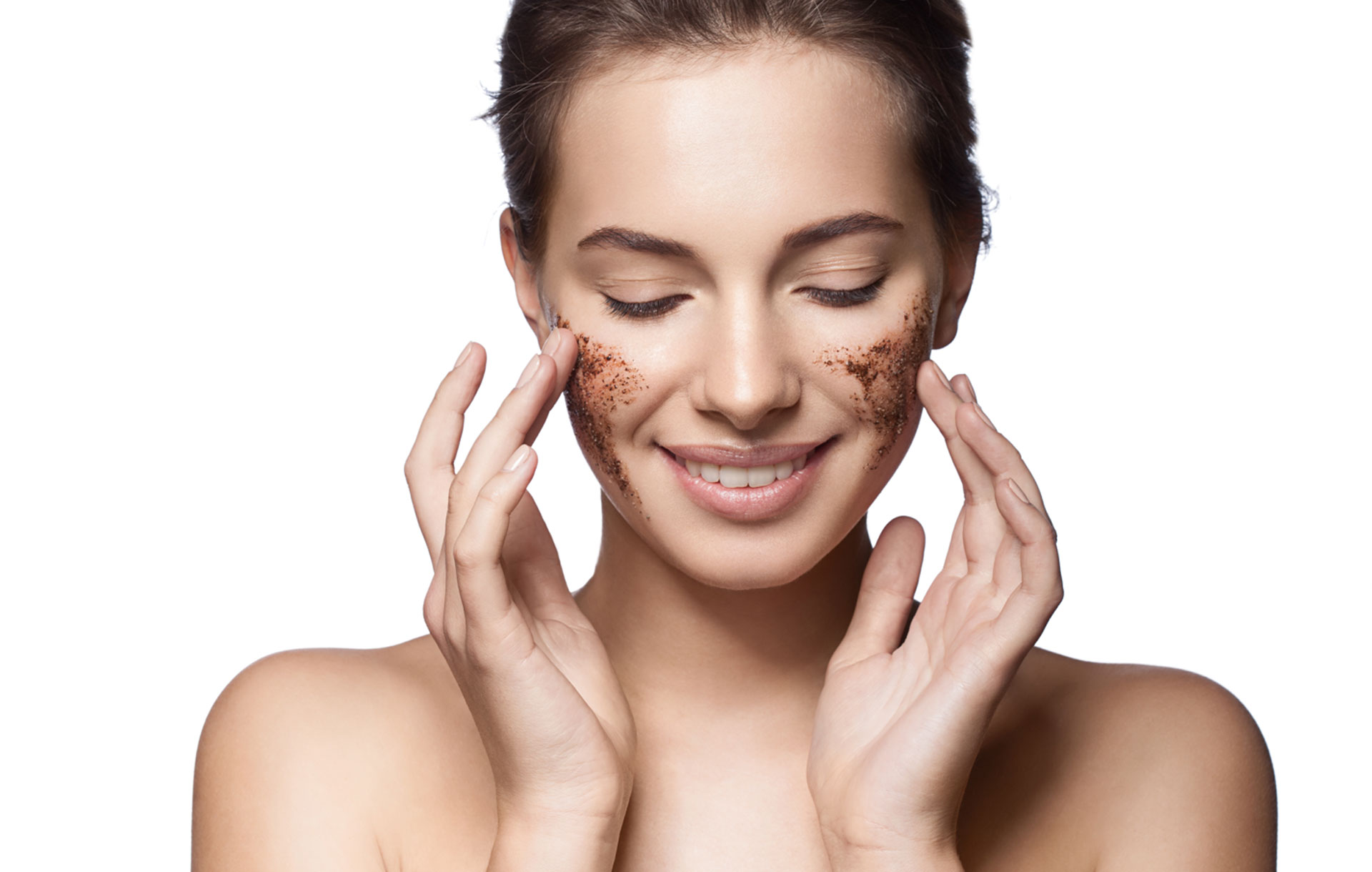Exfoliate your way to glowing skin
Gommage is a form of exfoliation that has been a staple of heralded French beauty practices to achieve effortlessly radiant skin! Gommage has been a critical step in French beauty routines with enviable results. The word gommage means “to rub out” or “erase,” which actually describes how you perform gommage to exfoliate the skin, physically rubbing off and erasing dead skin cells.
Most gommage formulas are gelbased and provide two forms of gentle exfoliation – physical and enzymatic. The physical-based exfoliation comes from a light rubbing action of the skin with the hands. The enzymatic activity is provided by natural sources of plant-based enzymes, such as pineapple (Bromelain), papaya (Papain), or cranberry.
How does it work?
Typically, gommage is applied to the skin, allowed to rest and dry, and then rubbed off. The two-fold activity of the enzymes breaking down dead skin cells and proteins and the physical rubbing of the skin unlatches dead skin cells from the surface and removes any dirt or debris, revealing the fresh cells underneath. After removal, the skin appears more vibrant, bright, and smoothed, all without compromising the skin’s barrier or creating sensitization. These characteristics make it appropriate for virtually all skin types and conditions, for all skin tones. Gommage is not limited to the face; it may also be performed on the body to impart the same incredible benefits.
[ihc-hide-content ihc_mb_type=”show” ihc_mb_who=”2,4,6,7,5″ ihc_mb_template=”3″ ]
The Step-by-Step Process
To elaborate on the process of application and removal of this technique, we can break it down into these treatment steps:
1. Cleanse skin with the appropriate cleanser for the skin type before doing a gommage treatment.
2. Apply the gommage product onto the skin in a thin layer, and allow it to
dry until it forms a tacky texture.
3. Begin removal by rubbing the skin in a ” see-saw” motion with gentle pressure.
• When removing, it is crucial to stabilize the surrounding skin to not stretch or strain the tissue. Stabilization is achieved by holding the skin taut with your non-dominant hand and then gently rubbing the area for removal with your dominant hand’s fingers. Using your dominant hand for removal allows more control of the pressure and direction of the rubbing action.
4. Brush or wipe off any remaining residue. Rinsing is not needed, as removal of the product occurs with the rubbing process.
When performing gommage on ultrasensitive or rosacea-prone skin types, it is essential to highlight the “lighthanded” instruction of removal, as excessive rubbing should be avoided. If you find removing the treatment too intense, you may re-wet the formula to lessen the amount of friction created, and use it once per week, instead of the recommended two to three times per week.
What should you look for in formulas?
There are mixed opinions on which products represent a genuine gommage exfoliant. For instance, the word gommage is technically interchangeable with any physical scrub for the skin, so scrubs and polishes with the name “gommage” on their label are often confused with the traditional, grit-free gommage. Many experts in the industry believe products containing physical scrubbing agents are not authentic. However, if you use gommage with grit, it is critical to note the products provide even further, potentially overlyaggressive, physical exfoliation of the skin. Some common physical exfoliants used are jojoba beads, nutshells, or sugar crystals. Formulations with grit are an excellent choice for thicker, sun-damaged skin types or skin with considerable congestion and blackheads. If you have sensitive skin or inflamed, active breakouts, utilizing these types of gommage formulas is not recommended, as they could further aggravate the skin or exacerbate issues.
Taking Precautions
After gommage, always apply sun protection. No matter how gentle, any form of exfoliation leaves the skin more exposed and increases potential damage from the sun. As estheticians, we often encounter exfoliation fans who may be over-exfoliating their skin. As part of the consultation process, understanding our client’s full homecare regimen allows us to recognize their skin’s current state and make the best post-care recommendations. If they are using acid-based exfoliants, peels, retinol, or any other products that thin the skin at home, it is not recommended to apply those products on the same day of the gommage treatment, either before or after. Application of these products may cause over-sensitization, defeating the purpose of using gommage as a gentle option of exfoliation.
Even as an age-old practice, gommage is relevant in present-day skincare; it provides a gentle option to buff and remove dead skin cells with natural ingredients. Gommage brightens, smooths, and increases skin vitality without the harsh side effects of acidbased peels or the intense scrubbing of severe exfoliants. Take a page out of traditional French beauty practices and explore the excellent results of gommage on your own skin, today!
[/ihc-hide-content]













